Note: This website was automatically translated, so some terms or nuances may not be completely accurate.
Cultivating an inclusive society starting with agriculture. What is Setagaya Ward's challenge?

Yoshida Yukisato
Chiba University Graduate School of Horticulture

Saya Kuroiwa
Setagaya Ward

Kenji Suda
Setagaya Ward

Nobuhiro Hamasaki
Dentsu Group Inc.
"Social participation of people with disabilities" and "securing the next generation of farmers." Initiatives addressing these two distinct challenges through "agriculture-welfare collaboration" are now spreading nationwide.
In Setagaya Ward, Tokyo, a farm-welfare collaboration project began in 2022. Jointly run with a general incorporated association and companies including the Dentsu Group, it prioritizes promoting agriculture, advancing disability welfare, and building community. The Dentsu Group employs local people with disabilities to operate the farm. They also hold agricultural experience sessions and commission local welfare facilities to process harvested produce, contributing to enhancing the sense of purpose for people with disabilities across the community.
How does combining agriculture and welfare contribute to solving the challenges each faces? A roundtable discussion was held featuring Sayaka Kuroiwa, Chief of the Urban Agriculture Division, Economic and Industrial Affairs Department, Setagaya City; Takeshi Suda, Chief of the Community Living Division for Persons with Disabilities, Disability Welfare Department, Setagaya City; Nobuhiro Hamazaki, who promotes employment for persons with disabilities at the Dentsu Group; and Yukio Yoshida, Professor at the Faculty of Horticulture, Chiba University, who has long researched agriculture-welfare collaboration.
Based on unique examples being advanced in Setagaya Ward, they exchanged views on the effectiveness of agriculture-welfare collaboration and its future potential.
<Table of Contents>
▼From Social Welfare Corporations and NPOs to Businesses: Expanding the Role of Participants in Agriculture-Disability Welfare Collaboration.
▼The Challenges Facing Setagaya Ward: "Declining Farmland" and "Employment Environment for People with Disabilities".
▼Collaborating with diverse local stakeholders centered around farm operation.
▼Committing to economic stability for people with disabilities and their future sense of purpose through corporate power.
▼The potential of "Farms": Where everyone can cultivate their own "irreplaceability".
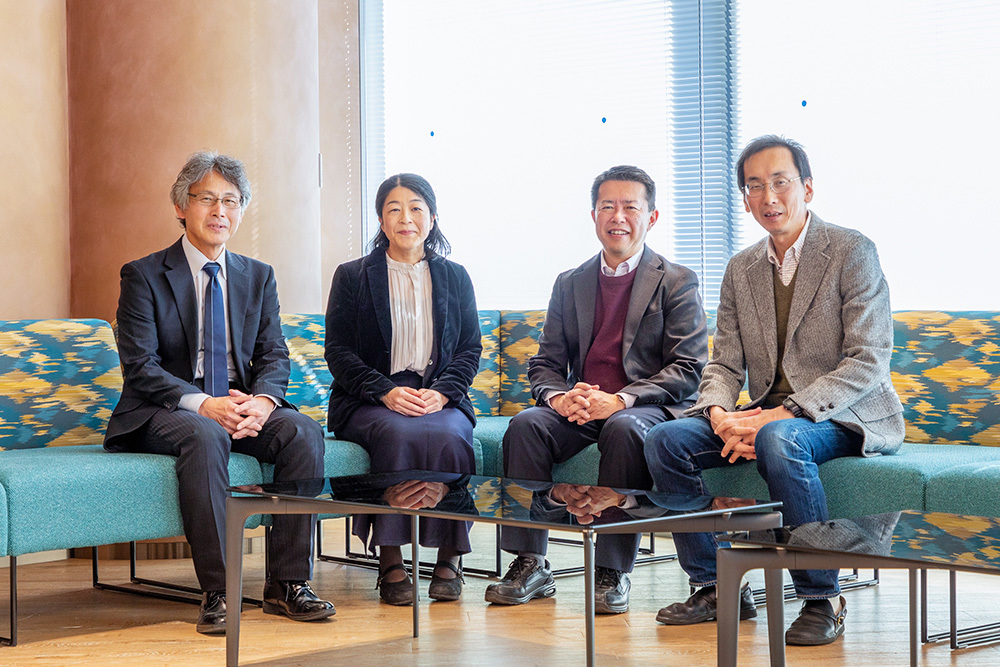
From social welfare corporations and NPOs to corporations. Expanding the role of agriculture-welfare collaboration.
Hamazaki: Professor Yoshida, even before the term "agriculture-welfare collaboration" became widely known, you focused on perspectives like "employment for people with disabilities" and "securing agricultural workers," advancing research and initiatives. Could you first tell us what sparked this?
Yoshida: I was previously transferred within the Ministry of Agriculture, Forestry and Fisheries (MAFF) from an administrative bureau to the National Agriculture and Food Research Organization (NARO). While at NARO, I initially researched rice and wheat. Then, I saw an NHK program featuring a social welfare corporation in Yokohama engaged in agriculture. I witnessed people with disabilities working vibrantly in the fields. I have a son with a disability myself, and because I was involved in agricultural research, I felt this was an area I should explore.
At the time, the Ministry of Agriculture, Forestry and Fisheries (MAFF) had a "Farm Employment and Women's Division" promoting initiatives to get farms and agricultural corporations to hire people with disabilities. However, even with the hard work put into supporting job searches, the situation was such that they might manage to get just one person hired. Then, I saw a TV program featuring a social welfare corporation where about 20 people with disabilities were happily working together, cheerfully engaged in practical farming activities. I thought this approach might be more effective, so I proposed to MAFF that I wanted to research employment for people with disabilities in agriculture. This became the catalyst for my research on social welfare corporations and NPOs engaged in farming.
However, back then, the term "agriculture-welfare collaboration" didn't even exist, and gaining understanding from those around me was difficult. It was a period of trial and error. During this time, I learned that initiatives were increasing where people with disabilities and support staff from welfare facilities would go to farms struggling with labor shortages to perform agricultural work under the form of "outside facility employment." I began researching this type of work arrangement. I also started investigating leading examples of employment for people with disabilities in agriculture happening across the country and giving lectures at seminars.
※1 National Institute for Food and Agriculture: An institution conducting comprehensive research on domestic and international trends and policies concerning food, agriculture, forestry, fisheries, and rural/fishing villages, utilizing agricultural economics, general economics, law, and other disciplines.
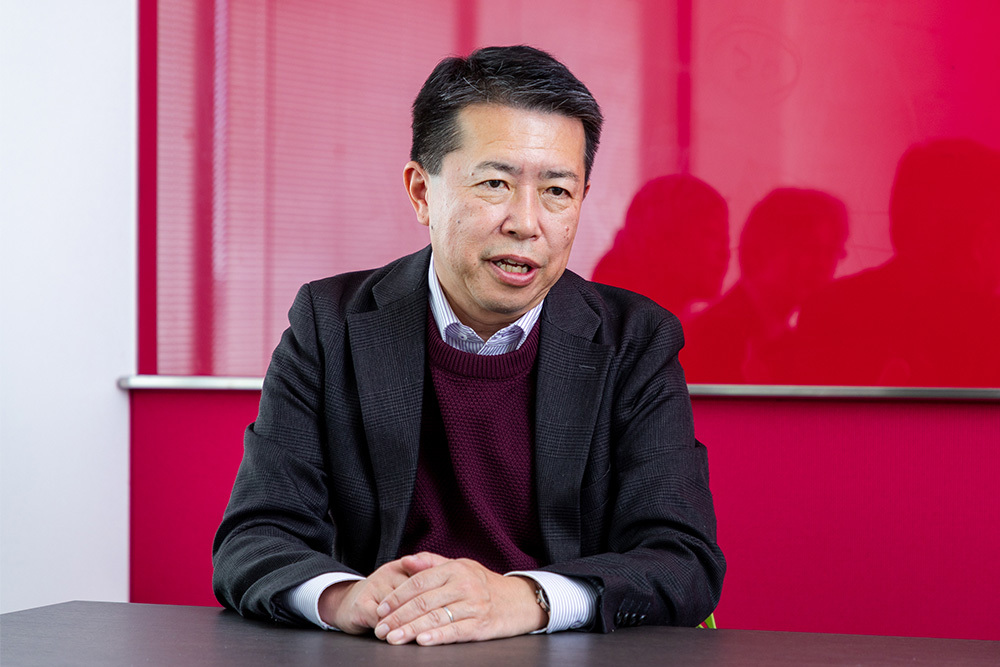
Hamazaki: When did the term "Agricultural-Welfare Collaboration" emerge, and how did it spread nationwide?
Yoshida: Tottori Prefecture launched a support project for agriculture-welfare collaboration in 2010, which I believe was the first official public initiative. That same year, the National Institute of Agricultural Sciences (NIAS) under the Ministry of Agriculture, Forestry and Fisheries (MAFF) issued a press release proposing that "collaboration between agriculture and welfare is necessary to create employment opportunities in agriculture for people with disabilities." Subsequently, MAFF's administrative departments also began using the term "agriculture-welfare collaboration."
Hamazaki: So, after 2010, this concept began to spread nationwide.
Yoshida: That's correct. Also, just a little before that, voices began emerging within companies stating that it was difficult to hire people with disabilities as new staff solely for easily outsourced tasks like cleaning and laundry. This led to growing attention on agriculture as a form of "work" for people with disabilities employed by companies.
Hamazaki: So, from the perspective of employing people with disabilities, companies increasingly began actively considering agriculture-welfare collaboration.
Yoshida: The first successful case of corporate-led agriculture-welfare collaboration was by Kokuyo, a stationery manufacturer. Their special subsidiary Heartland, established in 2006, successfully employed eight people with disabilities in a hydroponics business, leading other companies to increase similar initiatives.
Furthermore, the initiative by "CTC Hinari," a special subsidiary of Itochu Techno-Solutions, gained attention as a new model for agriculture-welfare collaboration. Based in Hamamatsu City, Shizuoka Prefecture, they established a successful system where employees with disabilities and support staff work in pairs to assist large-scale farms struggling with labor shortages. This case is said to have become a catalyst for further corporate adoption of agriculture-welfare collaboration. Not only did it give individuals with disabilities a tangible sense of "being useful to someone" by pleasing the farmers, but it also contributed to local agriculture.
Currently, in prefectures with thriving agriculture, farming is becoming a major activity undertaken by welfare facilities. Looking at the work performed by Continuous Employment Support Facilities (*3), agriculture accounts for 41% in Nagano Prefecture and 36% in Niigata Prefecture.
※2 Specially Designated Subsidiaries: Subsidiaries established specifically to promote and stabilize employment for people with disabilities.
※3 Continuous Employment Support Facility: A facility aimed at employment where individuals with disabilities engage in work activities while receiving support. It features a more accommodating work environment than typical companies and includes the provision of extensive support staff.
The challenges Setagaya Ward faces: "Declining farmland" and "Employment environment for people with disabilities."
Hamazaki: While national and local governments are promoting agriculture-welfare collaboration, Setagaya Ward also launched an agriculture-welfare collaboration project in 2022. What were the specific challenges perceived in the agriculture and welfare sectors that prompted this initiative?
Kuroiwa: Regarding agriculture, Setagaya Ward actually has the second-largest amount of farmland among Tokyo's 23 wards. We are working to promote agriculture as one of the city's attractions. However, due to inheritance issues, the aging of agricultural workers, and a lack of successors, farmland continues to decrease.
The impetus for considering agriculture-welfare collaboration came from a sense of crisis over the situation where farmland, which was approximately 117 hectares in 2009 (Heisei 21), had decreased to about 86 hectares by 2018 (Heisei 30) – a loss of roughly 30 hectares over 10 years. Furthermore, there were concerns about the "2022 Problem" concerning Production Green Areas, which accounted for 80% of the farmland in 1992 (Heisei 4). This problem arises because Production Green Areas designated in Heisei 4 will have their restrictions lifted after 30 years, allowing conversion to other uses.
Thus, with farmland conservation efforts being an urgent priority for the ward, advancing agriculture-welfare collaboration emerged as one new initiative the ward had not previously undertaken to effectively utilize farmland.
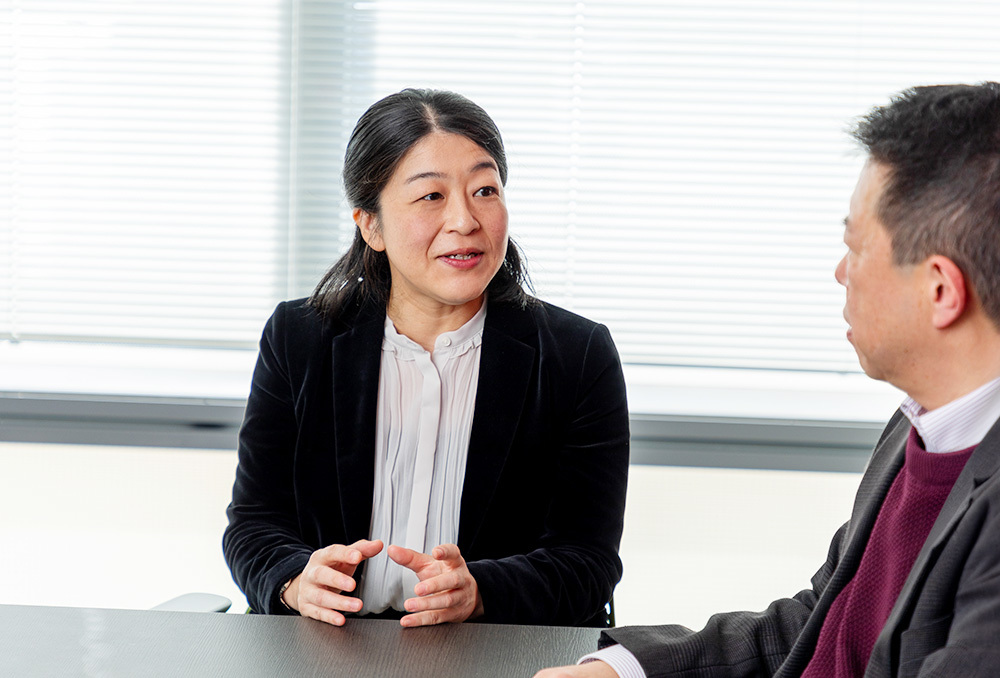
Hamazaki: From the perspective of disability welfare, what challenges or considerations led you to pursue this agriculture-welfare collaboration?
Suda: Many welfare facilities earn wages by performing work commissioned by companies. However, discussions about this project began right in the midst of the COVID-19 pandemic, a time when requests from companies had sharply declined. Furthermore, the wage levels in Setagaya Ward are slightly lower than the Tokyo metropolitan average, and improving them is a major challenge. Given these circumstances, we anticipated that the agriculture-welfare collaboration initiative could lead to providing employment opportunities for people with disabilities, expanding their choices, and increasing wages. We thought it would be beneficial to advance this together with the Urban Agriculture Division.
Centered around farm operation, we aimed for collaboration with various local stakeholders.
Yoshida: So Setagaya faced unique challenges for urban agriculture, distinct from those in more traditional farming areas. What specific initiatives are currently underway in this project?
Kuroiwa: This project centers on farm operations that include employment for people with disabilities, growing and harvesting crops in the fields. While doing this, we are also implementing "agricultural work experiences" for local people with disabilities, working to increase wages through orders placed with welfare facilities, collaborating with local businesses and organizations, and promoting the concept of agriculture-welfare collaboration itself. Initially, the farm operated on leased land, but in 2022 (Reiwa 4), the ward purchased the land.
Hamazaki: The farm is jointly operated by Setagaya Ward and the Dentsu Group. While seconded to a Dentsu Group subsidiary, I launched "agriculture" as a job for employees with disabilities. Witnessing firsthand how well agriculture suits individuals with intellectual or mental disabilities became my motivation to advance this project.
Currently, the Dentsu Group employs eight local individuals with disabilities (as of December 2023) as staff members engaged in farm management. Additionally, our "Farming Experience Sessions" bring together around 20 to 30 diverse participants with varying degrees and types of disabilities, all enjoying farm work together.
Harvested produce is sent to local welfare facilities for processing, creating products like "Sweet Potato Jam" and "Dried Onions." For sales, we collaborate with JA and engage in partnerships with various local stakeholders.
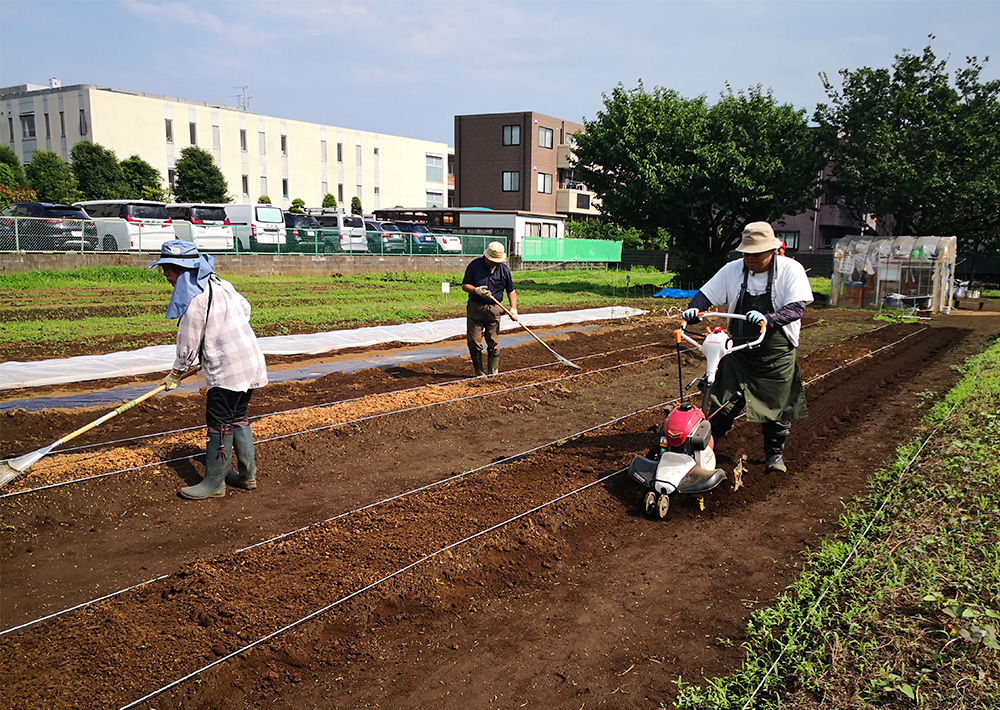
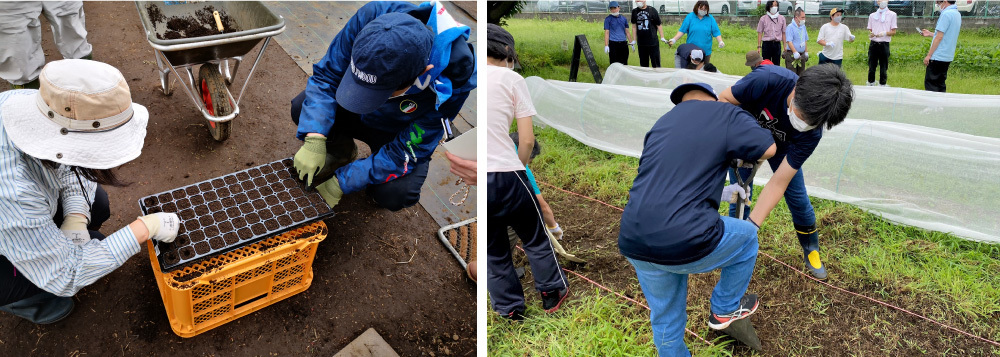
Yoshida: Does the mechanism of placing processing orders with this welfare facility and paying compensation for them contribute to the wage increase we discussed earlier?
Suda: That's correct. Moving forward, we hope to add value to our products and further increase wages.
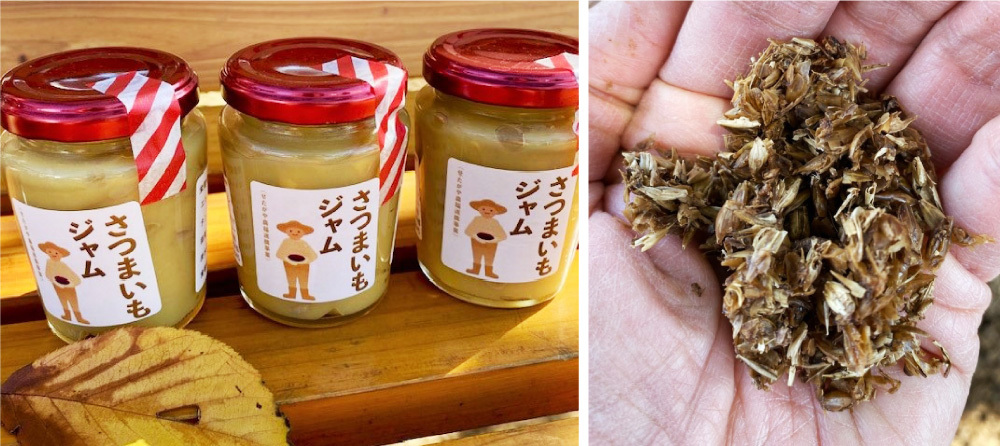
Hamazaki: A key focus of this project is building an inclusive community centered around the farm. In October 2023, we held an "Open Farm" event. We opened the farm for a day to local residents and stakeholders. Staff with disabilities personally introduced our farm-welfare collaboration initiatives. Families experienced harvesting. We sold sweets and quiches made in collaboration with local welfare facilities and businesses. It became a truly community-wide event.
K uroiwa: Sharing our farm-welfare collaboration efforts with the community and gaining their support is crucial for advancing this project. Building those connections through the event and seeing everyone enjoy themselves was a major achievement.
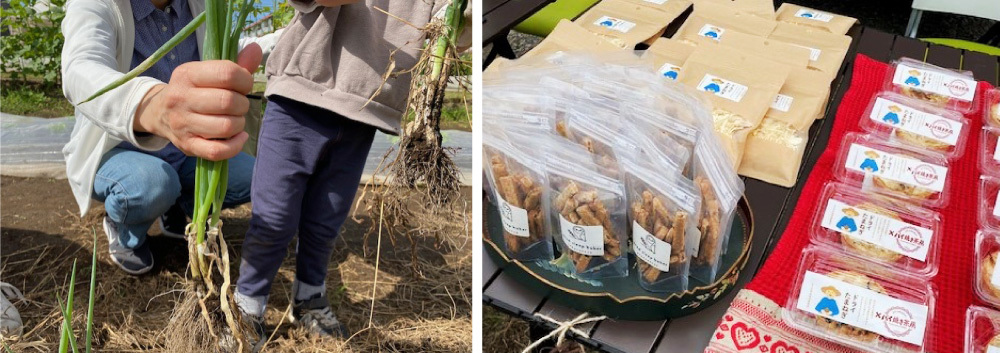
Leveraging corporate strength to commit to the economic stability of people with disabilities and their subsequent sense of purpose.
Hamazaki: There are various forms of agriculture-welfare collaboration in Japan. From your perspective, Professor Yoshida, what do you see as the strengths and unique features of the agriculture-welfare collaboration projects being promoted in Setagaya Ward?
Yoshida: I believe it lies in effectively collaborating with companies and leveraging their strengths. For example, "agricultural parks" are being developed in various regions to promote interaction with nature, understanding of agriculture, and environmental education. Collaboration between agriculture and welfare using these parks has also begun. However, due to various restrictions under the Park Act, it is difficult to sell crops grown in these "agricultural parks." As a result, participants take their harvested crops home individually, and any surplus is donated to welfare facilities. This makes it impossible to expand the initiative as a business.
In terms of connecting to the joy of "working diligently, making something, and selling it," Setagaya Ward's agriculture-welfare collaboration project seems to have achieved a successful breakthrough. I believe the initiative and sales capabilities of the companies involved were crucial. Companies possess diverse expertise and sales channels. Kokuyo, mentioned earlier, is a stationery manufacturer. They leveraged their sales network to supermarkets to develop sales channels for their special subsidiary, "Heartland." I believe Setagaya Ward's case also became possible through collaborative efforts with companies, enabling the kind of broad-based initiatives we discussed earlier.
Suda: This time, we established a system where processing agricultural products at welfare workshops contributes to the wages of disabled workers at those facilities. In that sense, I believe the benefits were effectively returned even to disabled individuals not directly involved in the farms or agricultural work.
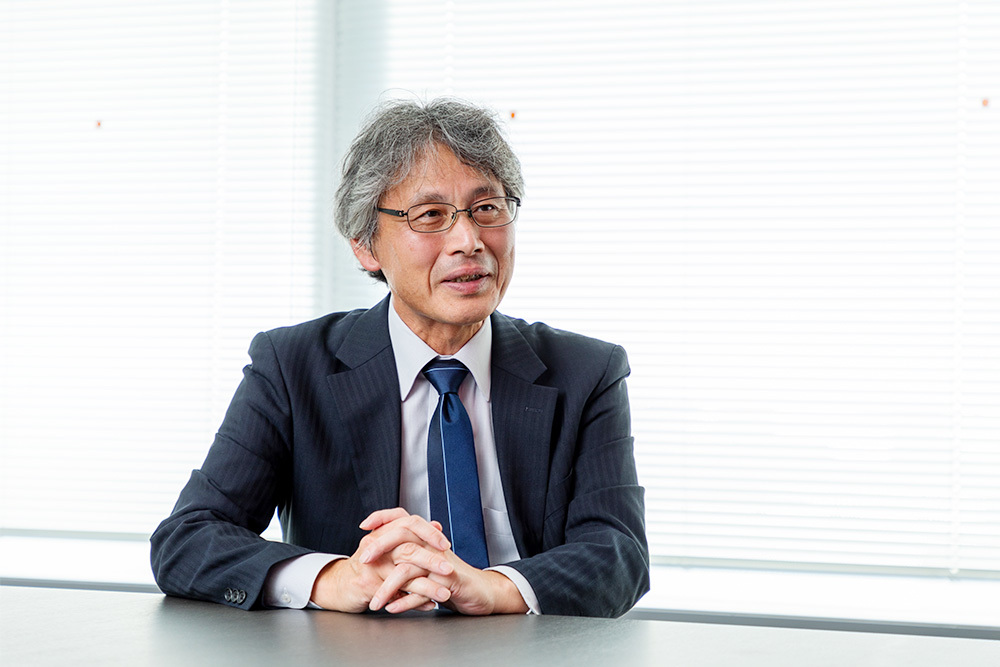
Yoshida: Building such systems, developing sales channels, and creating products has its limits when relying solely on local governments or welfare facilities. Therefore, collaborating with companies opens up new possibilities. I also feel there are benefits for companies beyond just business viability. What are your thoughts on that?
Hamazaki: For companies, the major benefit is compliance with the statutory employment rate. Partnering with the government to create an environment where employees with disabilities feel a greater sense of purpose in their work is significant. However, it's also true that support focused solely on employment has limitations in enhancing the overall quality of life for people with disabilities. Many parents of children with disabilities express anxiety about their child's future after they are gone. Hearing these concerns makes me deeply realize the crucial role companies play in providing proper "employment" and paying wages. Furthermore, for true stability in daily life, connections within the community and collaboration with local government are indispensable.
While many companies engage in agriculture-welfare partnerships, few, like ours, collaborate with government not only in employment but also in the domain to promote inclusion across the entire community. That, I believe, is the uniqueness of the Setagaya Model.
The potential of "Farm" lies in enabling everyone to cultivate their own irreplaceable value.
Hamazaki: Looking ahead, could you share what you'd like to pursue further in Setagaya Ward and any current challenges you perceive?
Kuroiwa: We hope this initiative can also contribute to preserving farmland across the entire ward. For example, through interactions and work at the farms sparked by the "Setagaya Ward Agriculture-Welfare Collaboration Project," we envision connections forming between farmers and individuals with disabilities. Ideally, this could lead to them assisting or being employed at various farms within the ward, providing much-needed support to farmers struggling with labor shortages. We plan to continue exploring this while understanding the current situation and intentions of the farmers.
Yoshida: There are two types of "assistance" for farmers. The reality is that most farmers need extra hands not year-round, but specifically during busy periods like sowing and harvesting. Larger-scale farmers (certified farmers) and agricultural corporations suffer the most from labor shortages. The agriculture-welfare partnership fits this need perfectly. It's possible to have people do tasks like envelope stuffing or packaging at welfare facilities during regular times, and then request their help with farm work during the agricultural peak season.
Another scenario involves farmers struggling with succession issues or aging, unsure whether to continue farming. Having people with disabilities help carry heavy loads or work alongside them can motivate these farmers to think, "Maybe I should keep trying a little longer." Alternatively, the trust built between the farmer and the person with disabilities can lead to the farmer entrusting their land to the welfare facility where the person with disabilities belongs upon retirement, allowing the facility to start farming.
Hamazaki: So that kind of scenario exists too.
Suda: Hearing that makes me feel like a whole range of possibilities is opening up. From the welfare facility's perspective, while they want to develop new contracted work to increase wages, the reality is that finding suitable jobs is difficult because each person with disabilities has different characteristics and challenges. That said, this "Setagaya Ward Agriculture-Welfare Collaboration Project" has created new developments by pioneering crop processing work with companies. Going forward, we hope to take it a step further and build relationships with farmers to create new employment opportunities.
Hamazaki: Yes, strengthening ties with farmers is something we want to focus on going forward.
What I notice when observing people with disabilities at the farm is that they all seek to feel needed by someone. When we deliver harvested produce to nearby cafes, some customers speak directly to our staff with disabilities. Hearing things like "We always look forward to your produce!" motivates everyone to work harder to ensure a steady supply. Helping farmers and receiving their "thank you" gives them a sense of purpose. We hope that through these accumulated experiences, people with disabilities can become indispensable to the local agricultural community.
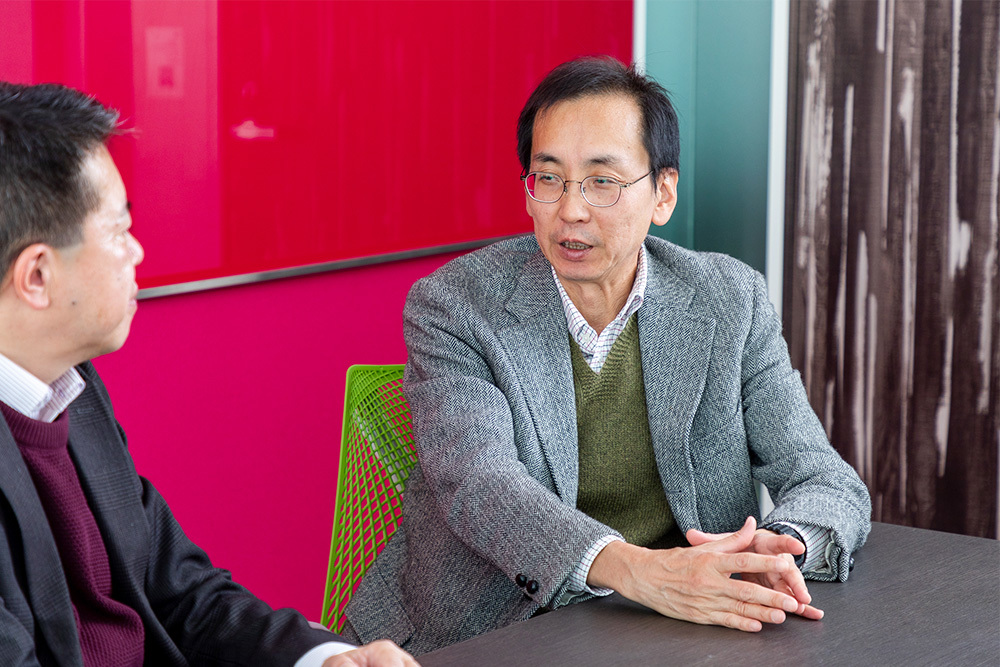
Yoshida: Furthermore, I hope Setagaya Ward will play a role in expanding the potential of agriculture-welfare collaboration in Japan. In Europe and America, especially the Netherlands, facilities called "social farms" or "care farms" exist everywhere, providing work and living environments not only for people with disabilities but also for those with dementia or addiction. In Japan too, initiatives are starting where people with dementia, social withdrawal, or criminal histories are reintegrating into society through agriculture.
Hamazaki: Social farms sound great. Actually, this project has also started collaborating with organizations supporting people experiencing social withdrawal, providing vegetables harvested from the farm for events and such.
Kuroiwa: Separate from this project, there are also farmers within the ward who run agricultural programs in cooperation with hospitals. However, we've also heard about the challenges of sustaining such activities.
Hamazaki: I believe Setagaya Ward is an area where various challenges facing Japan tend to become apparent. In that sense, Setagaya's agriculture-welfare collaboration aims to be a farm where not only people with disabilities, but all kinds of individuals called socially vulnerable can cultivate their own "irreplaceability." It's not just "agriculture" and "welfare," but "agriculture" and "happiness" working together.
Yoshida: I'm also looking forward to seeing how Setagaya's agriculture-welfare collaboration projects develop in the future. I have high hopes.
Was this article helpful?
Newsletter registration is here
We select and publish important news every day
For inquiries about this article
Author

Yoshida Yukisato
Chiba University Graduate School of Horticulture
Faculty of Horticulture
Professor
After graduating from the University of Tokyo's Faculty of Agriculture, he served as an administrative official at the Ministry of Agriculture, Forestry and Fisheries for 20 years. He then worked as a research officer at the ministry's National Institute of Agricultural and Food Science for 16 years. He retired as Deputy Director of the institute at the end of March 2021 and assumed his current position in April of the same year. He began researching "agriculture-welfare collaboration" in 2008. He holds a Doctorate in Agriculture. His publications include "Agriculture-Welfare Collaboration Makes Agriculture and Local Communities More Exciting" (2020).

Saya Kuroiwa
Setagaya Ward
Department of Economy, Trade and Industry Urban Agriculture Division
Section Chief
Effective fiscal year 2022, he will be assigned as Director of the Urban Agriculture Division within the Department of Economy, Trade and Industry. The Urban Agriculture Division promotes agricultural advancement and farmland conservation through initiatives such as: - Fostering understanding of urban agriculture through events like agricultural festivals and harvest/farming experience programs; - Supporting farmers through programs like the Agricultural Supporter System; - Managing statutory procedures related to farmland.

Kenji Suda
Setagaya Ward
Disability Welfare Division Community Living Support Section for Persons with Disabilities
Section Chief
From fiscal year 2023, he will be assigned to the position of Director of the Community Living Division for Persons with Disabilities within the Disability Welfare Department. The Community Living Division for Persons with Disabilities provides support for the community life of persons with disabilities, including the development and operational support of disability facilities, the promotion of employment for persons with disabilities, and the improvement of wages.

Nobuhiro Hamasaki
Dentsu Group Inc.
Director
After serving as Creative Director and Corporate Planning Manager at Dentsu Inc., he was seconded to a subsidiary company for persons with disabilities. He spearheaded the launch of new businesses for persons with disabilities and promoted collaboration with government agencies. Currently, he is responsible for advancing DEI initiatives across the entire group at Dentsu Group Inc. and DENTSU CORPORATE ONE INC.


